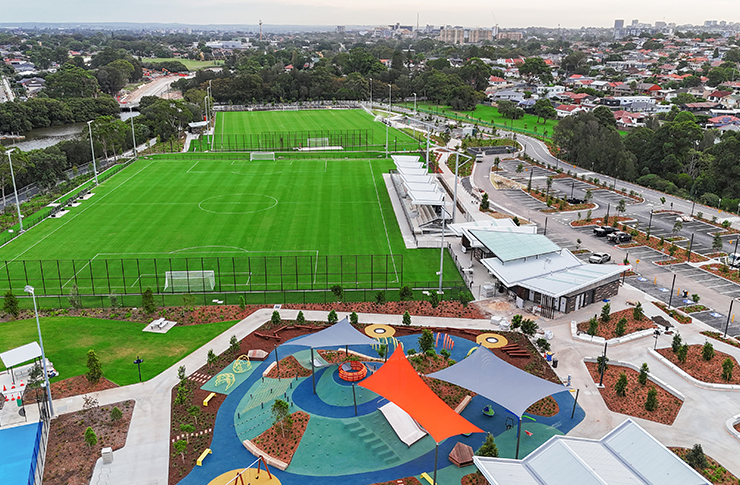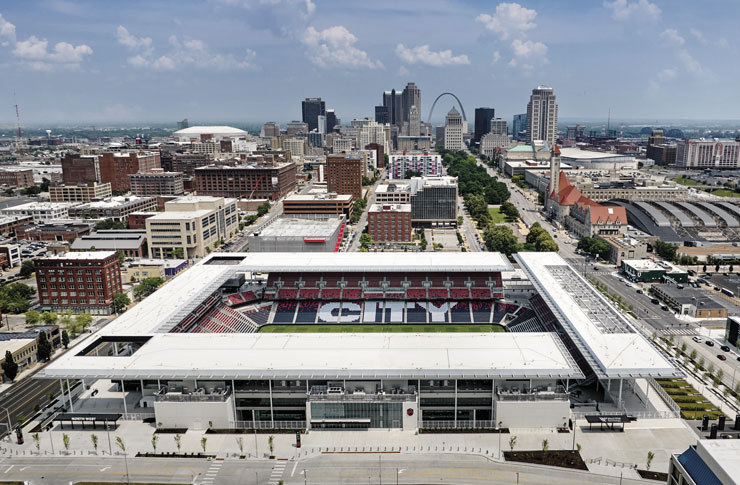Returning to talk, as we do every year, about grass in sport, we tried to take stock of the ‘focuses’ that are of most interest, with a view to a future that awaits a change of pace about the environment. We therefore focused on football, taking advantage of Tsport’s experience with the training events organised over the past year in many different stadiums and training centres.
Football Special Report: Natural and synthetic turf, training centres, lighting.
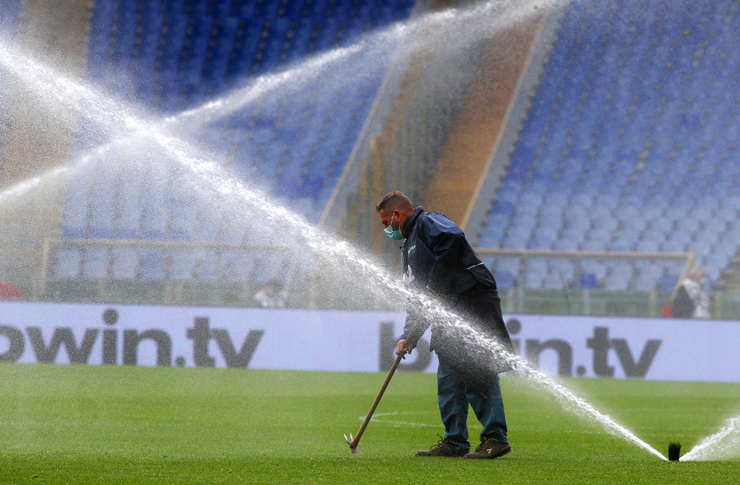
Rome, Olympic Stadium (Ph. Marco Iacobucci/Shutterstock).
The common denominator in the meetings and discussions over the past year has in every case been sustainability. The sustainability of sports facilities in terms of the management of natural grass (with the problems dictated by climate change), of synthetic turf (in relation to the disposal of exhausted turf), of performance infills (with the alarm over the dispersion of microplastics), and of energy efficiency (with the progressive revamping of all facilities).
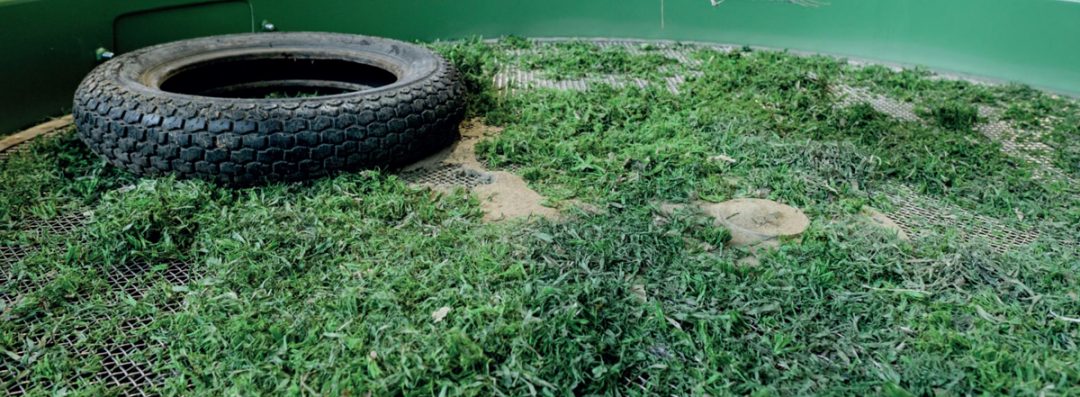
Viola Park
Il The Fiorentina sports centre, officially inaugurated on 11 October, is now the largest training centre for football clubs in Italy, with ten standard pitches, two stadiums, pavilions dedicated separately to the first team, women’s team and youth teams, and an architectural layout based on efficiency and environmental sustainability.
Around Villa Viola, a renovated 19th century rural building, are located the offices and media centre. Villa Viola becomes the social headquarters of ACF Fiorentina.
Each of the new pavilions has a basement part, thus limiting the maximum height. Each pavilion is built with visible Corten steel metal structures; the glazed spans allow open communication between indoors and outdoors, and the roofs with photovoltaic panels in green collect rainwater and can meet the energy needs of the entire sports centre.
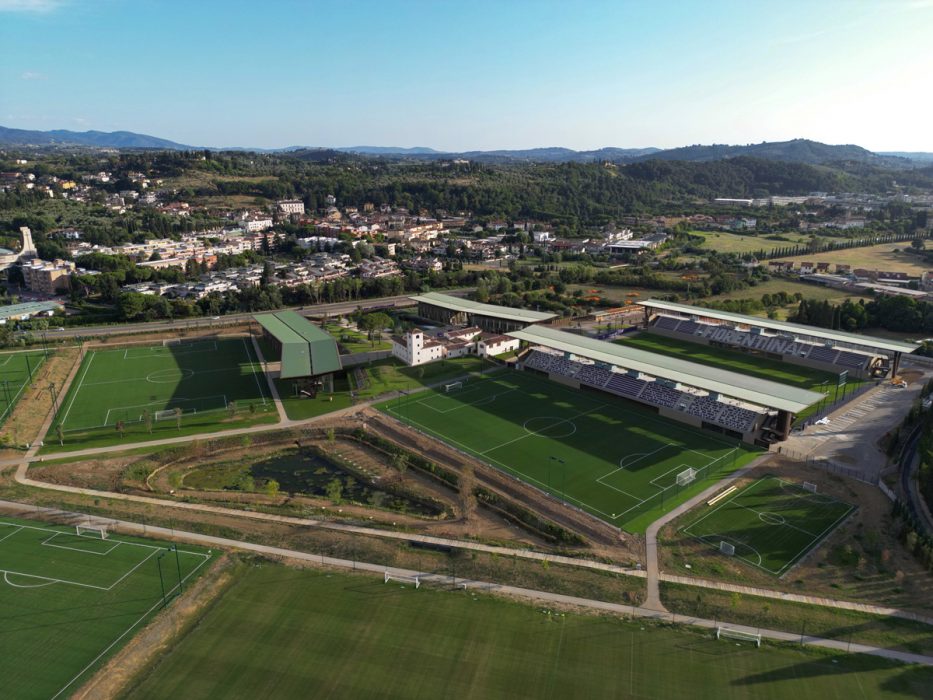
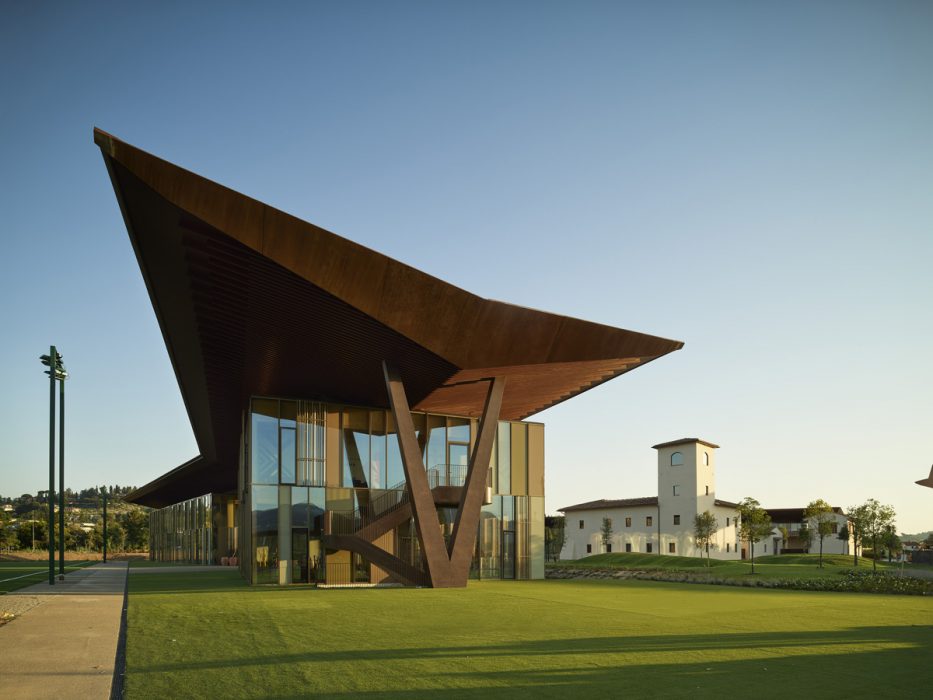
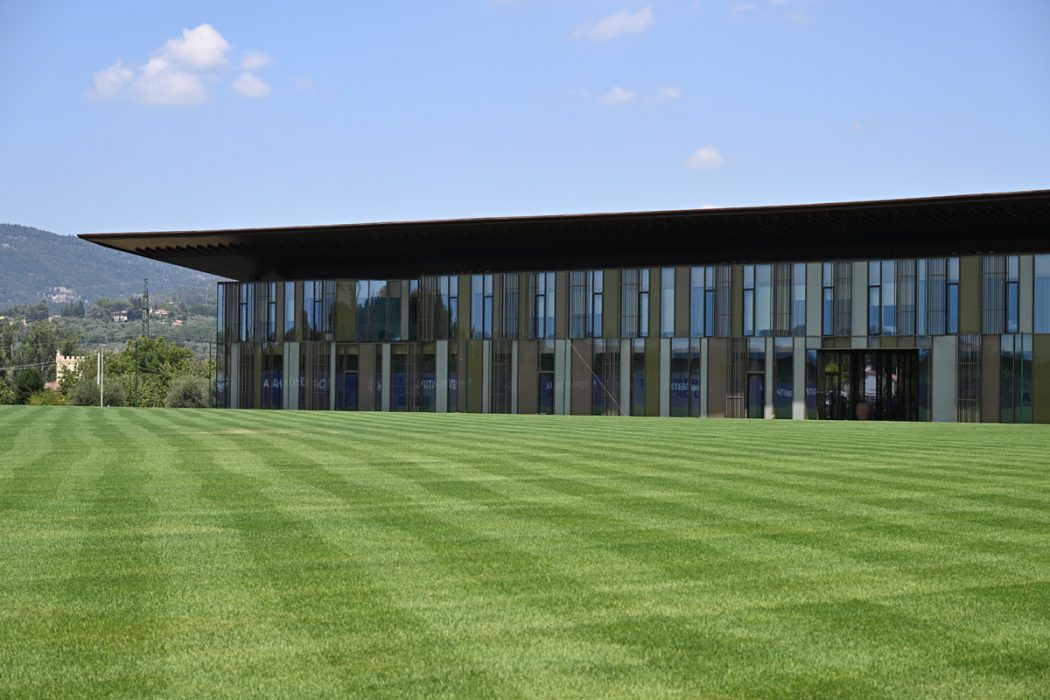
The Events Pavilion, which is designed as an underground structure that follows the curved line of the hills and is covered by a 70 cm thick slab that forms a green roof, is different.
In addition to the training grounds, there are two side-by-side stadiums, with two pavilions also serving as grandstands for the public. The central grandstand houses two bars for visitors and fans on the ground floor. The other grandstand houses the Fiorentina Store and other commercial spaces not yet allocated.
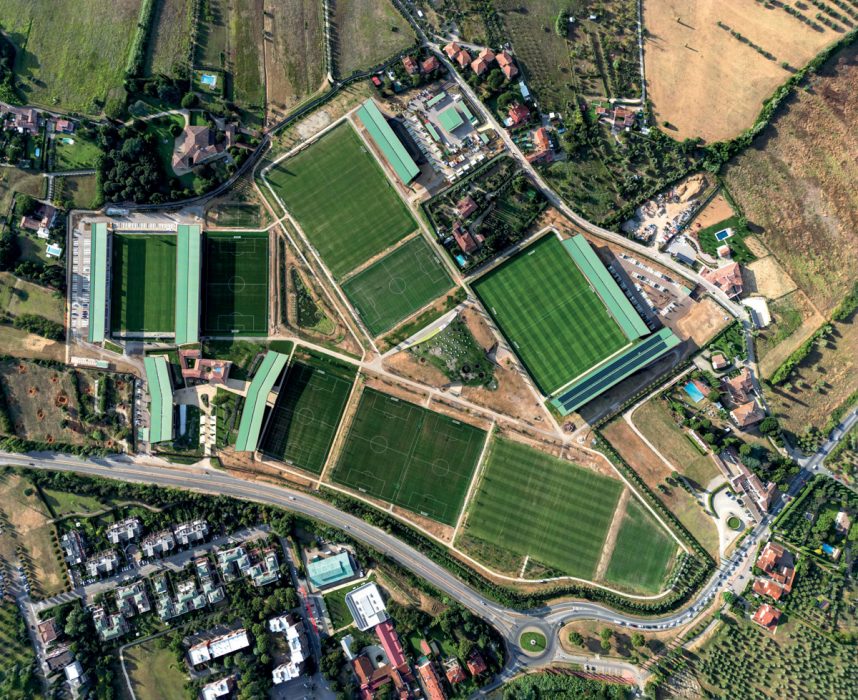
The 26 hectares are sized to accommodate the activities of ACF Fiorentina’s 20 teams. There are 10 standard pitches, all 105×65 m in size, plus two ‘free’ areas of the same size. A total of 5 fields, plus the 2 free fields and the goalkeeper’s field, are natural grass, while 5 fields are hybrid.
Trainig Centers and Stadia
After the Viola Park, we reviewed the training centres of the other Italian Serie A teams.
The following article describes the criteria dictated by the FIGC and UEFA for the construction of football stadiums. In addition, we talk about the new stadium being built by Sevilla Football Club in Spain.
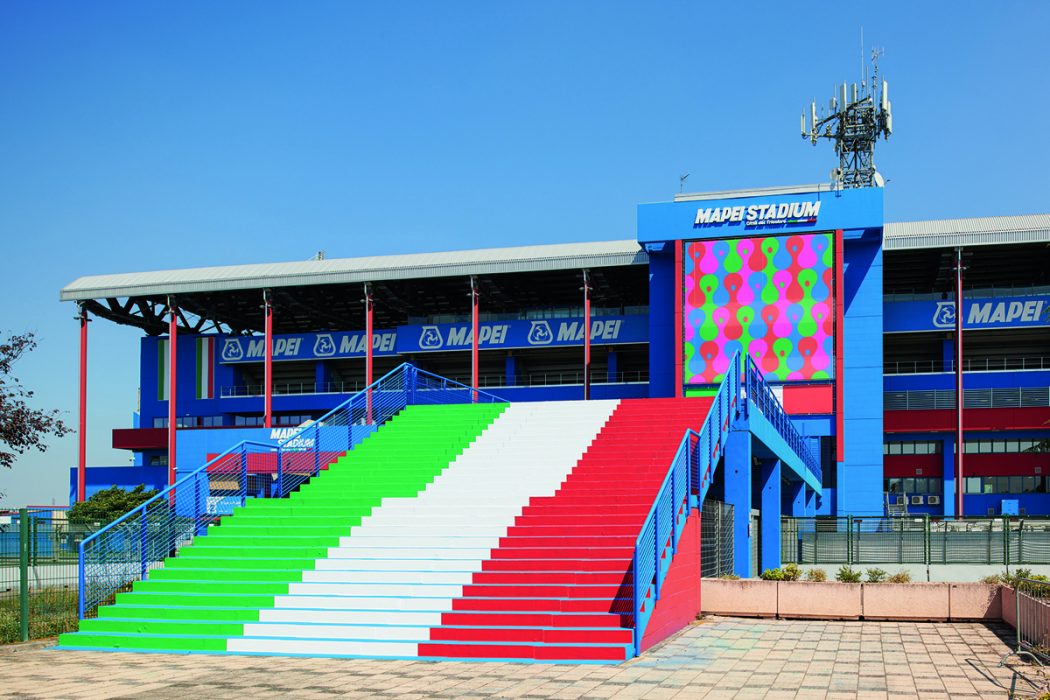
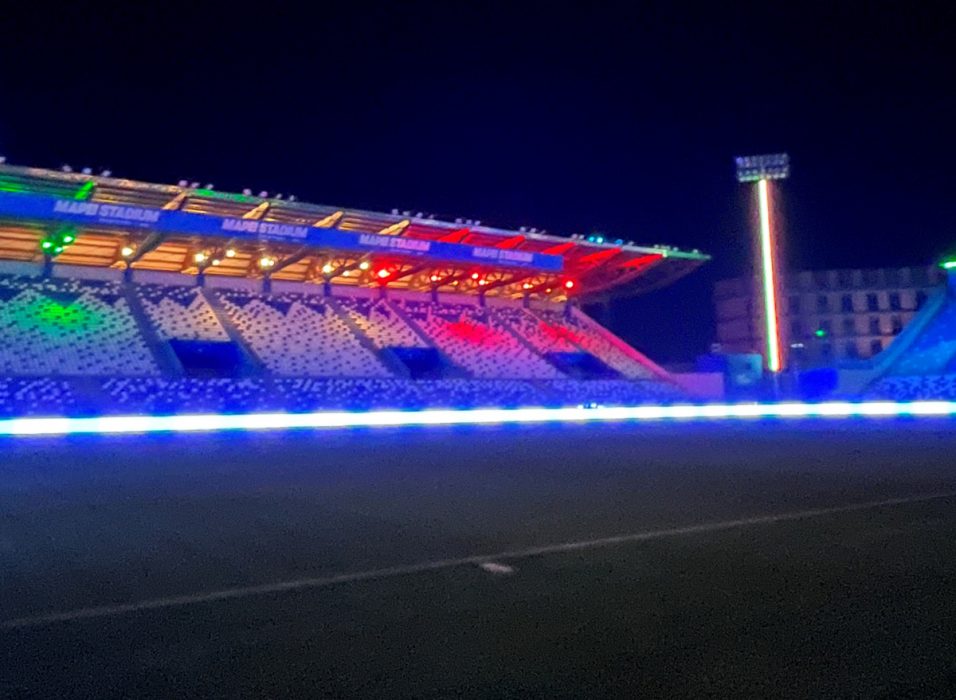
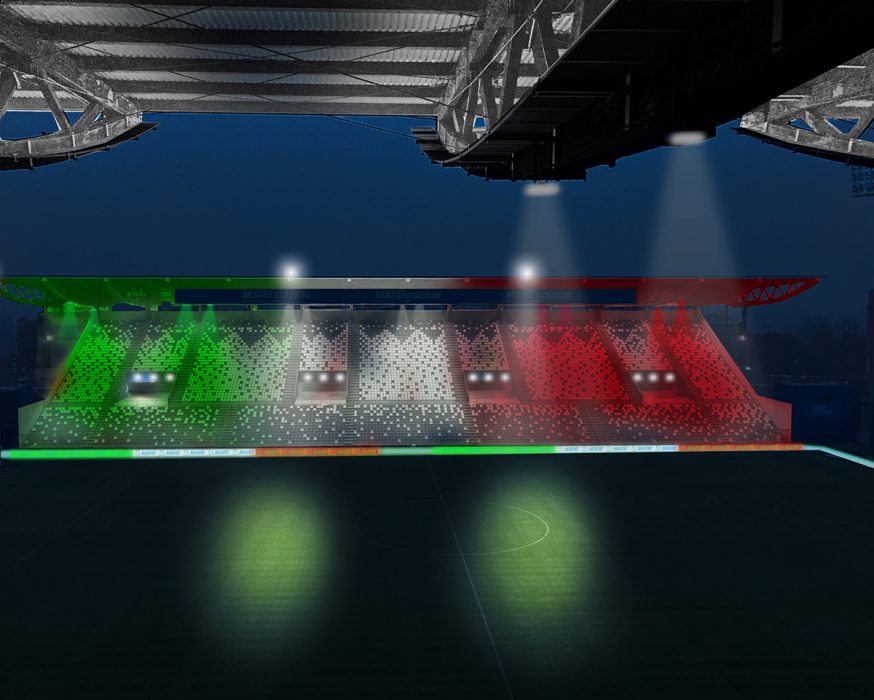
Finally, the features required by the FIGC and UEFA for the lighting of football stadiums are analysed in more detail, taking as an example the work done recently at the Mapei Stadium in Reggio Emilia, where the LED lighting system also allows the creation of spectacular lighting effects to entertain the fans outside playing time.





